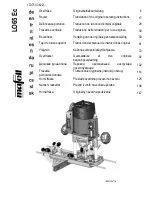
65
Packets arrived late: 0
Path-Jitter Results
Jitter number: 9
Min/Max/Average jitter: 1/10/4
Positive jitter number: 6
Min/Max/Average positive jitter: 1/9/4
Sum/Square-Sum positive jitter: 25/173
Negative jitter number: 3
Min/Max/Average negative jitter: 2/10/6
Sum/Square-Sum positive jitter: 19/153
NQA collaboration configuration example
Network requirements
, configure a static route to Switch C with Switch B as the next hop on Switch
A. Associate the static route, a track entry, and an ICMP echo operation to monitor the state of the
static route.
Figure 21 Network diagram
Configuration procedure
1.
Assign IP addresses to interfaces, as shown in
. (Details not shown.)
2.
On Switch A, configure a static route, and associate the static route with track entry 1.
<SwitchA> system-view
[SwitchA] ip route-static 10.1.1.2 24 10.2.1.1 track 1
3.
On Switch A, configure an ICMP echo operation:
# Create an NQA operation with the administrator name
admin
and operation tag
test1
.
[SwitchA] nqa entry admin test1
# Configure the NQA operation type as ICMP echo.
[SwitchA-nqa-admin-test1] type icmp-echo
# Specify 10.2.1.1 as the destination IP address.
[SwitchA-nqa-admin-test1-icmp-echo] destination ip 10.2.1.1
# Configure the operation to repeat every 100 milliseconds.
[SwitchA-nqa-admin-test1-icmp-echo] frequency 100
# Create reaction entry 1. If the number of consecutive probe failures reaches 5, collaboration is
triggered.
[SwitchA-nqa-admin-test1-icmp-echo] reaction 1 checked-element probe-fail
threshold-type consecutive 5 action-type trigger-only
[SwitchA-nqa-admin-test1-icmp-echo] quit
Vlan-int2
10.1.1.1/24
Vlan-int2
10.1.1.2/24
Vlan-int3
10.2.1.1/24
Switch C
Vlan-int3
10.2.1.2/24
Switch B
Switch A
















































